Projects
Sendas
A generative art project by Daniel Aguilar (protozoo) in collaboration with The Generative Art Museum.
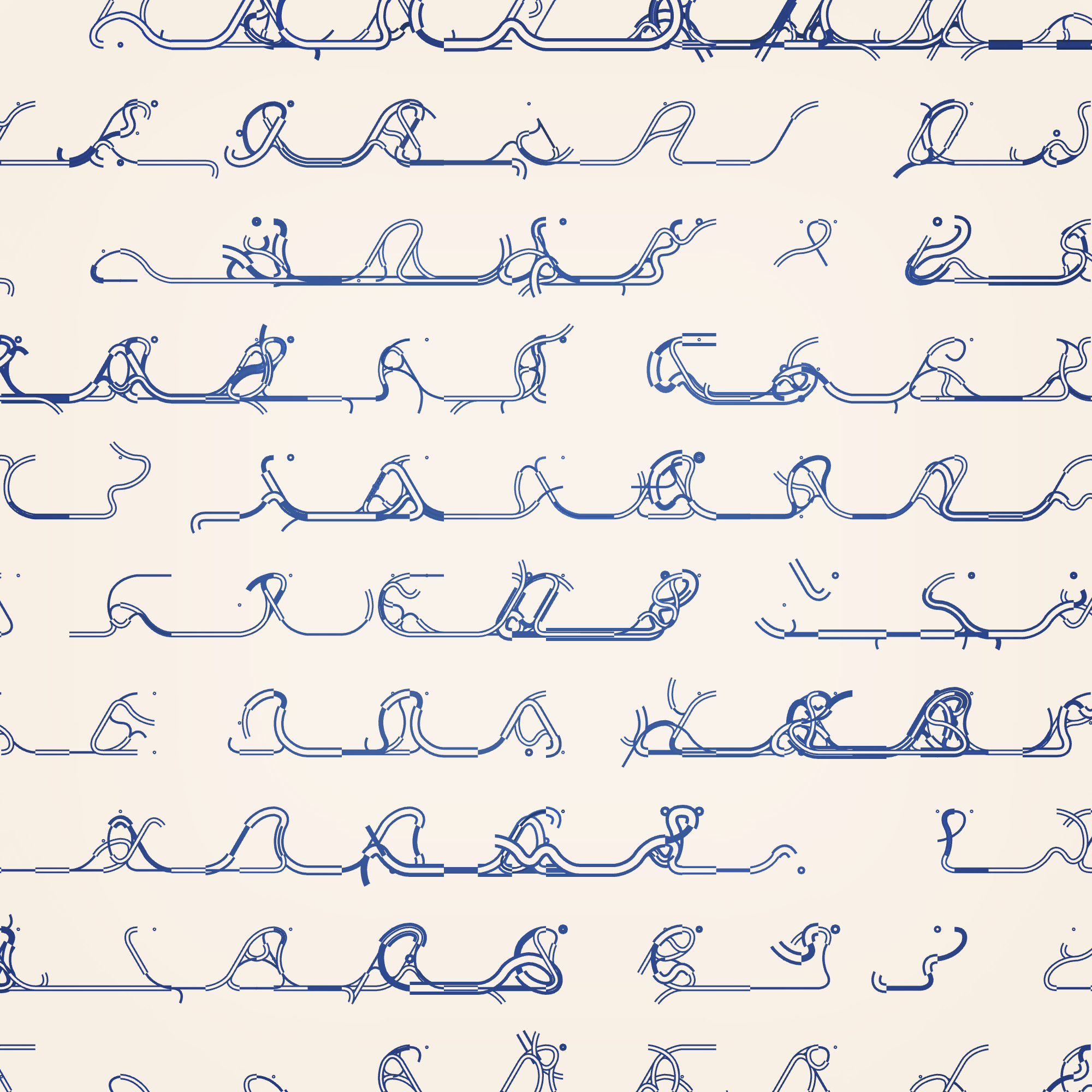
Every path taken is a universe of paths left behind. Every choice—whether conscious or accidental—closes doors while opening others we never imagined. In art, as in life, we navigate a landscape of decisions, hesitations, and surprises. Sendas is a meditation on this struggle: the impossible task of choosing "right" and the realization that, often, the path chooses itself.
Concept & Inspiration
At the core of Sendas lies the almost intractable challenge of choosing the "right" path—both in art and in life. Every decision eliminates countless possibilities, yet each opens new doors we could not have anticipated.
But how much of this process is truly ours? Are we really making decisions, or are we simply following a course shaped by accidents, subconscious impulses, and external circumstances? The path isn't fully in our control—it unfolds through an interplay of intention, randomness, and discovery.
This tension manifests as both struggle and exhilaration—the stress of decision-making, the paralysis of doubt, but also the thrill of surprise, the joy of curiosity, and the awe of watching something unfold beyond one's expectations.
Daniel don't create Sendas with the intention of guiding the viewer toward a specific experience. Instead, the artist embrace the unknown, allowing space for play, exploration, and discovery. The artist hope is that this same sense of curiosity and openness will resonate with those who engage with the work, each in their own way.
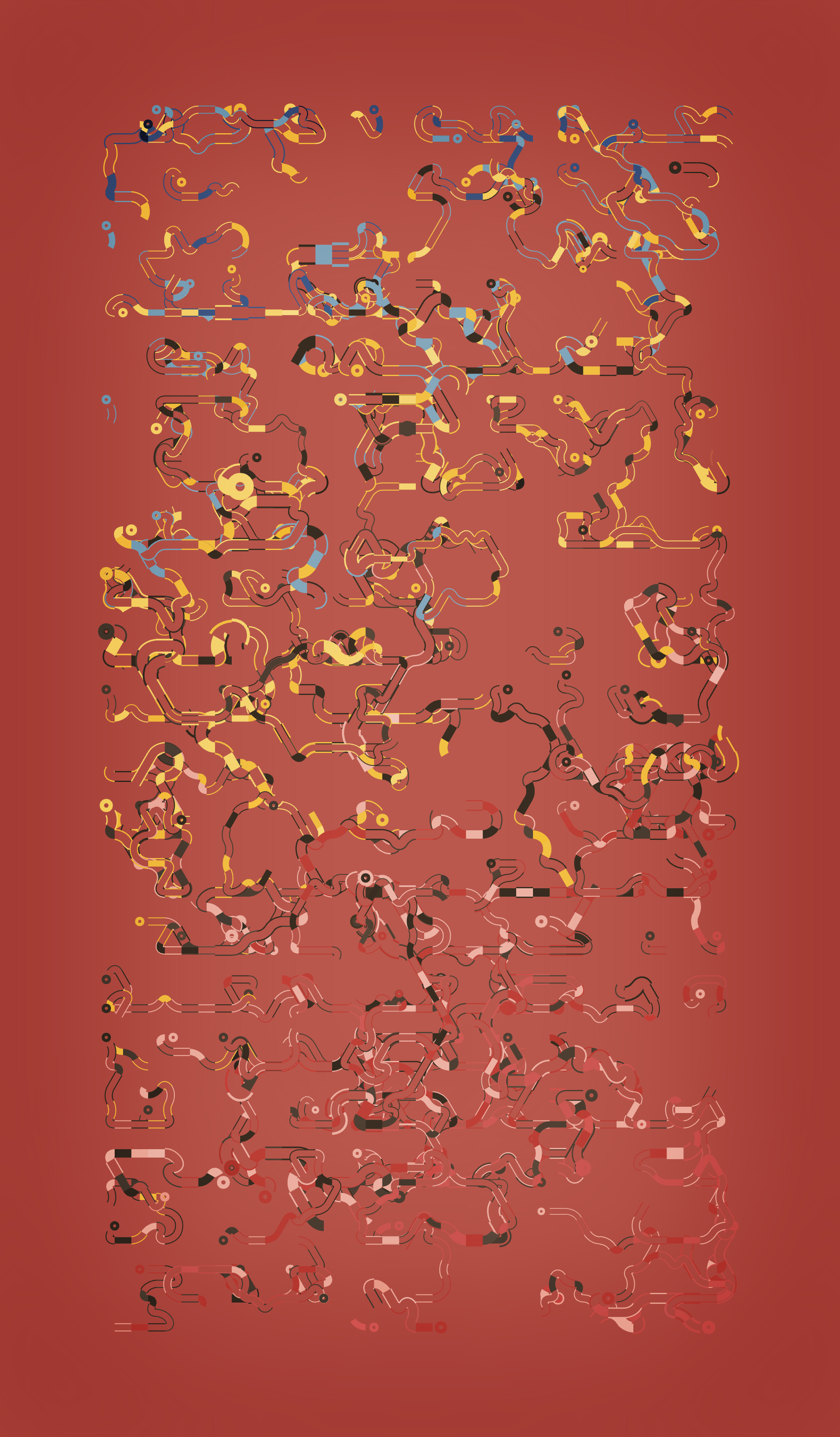
The Collection & Its Aesthetics
At the core of Sendas is a system of random walkers—simple agents that navigate a two-dimensional space, leaving a visual trace as they move. However, instead of the traditional Cartesian grid, Sendas unfolds within a hexagonal grid, where each position, or cell, can be either active or inactive. Walkers can only traverse active cells, shaping their journey through a blend of structured rules and randomness.
Before the walkers even begin, the grid itself is defined: the scale, the distribution of active/inactive cells, and the initial positions of the walkers—all set at the start, ensuring that each variation has a unique evolution.
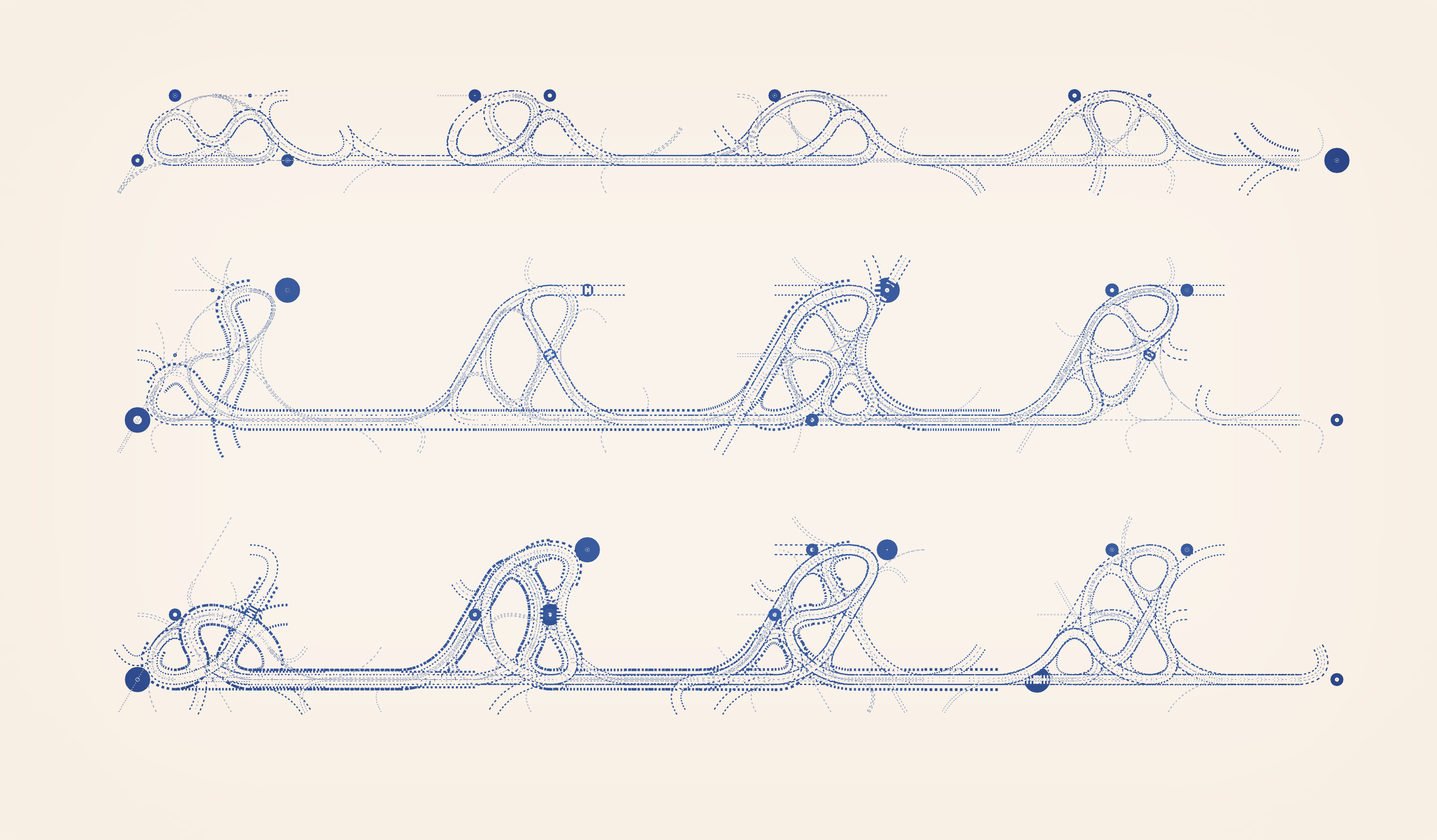
How the Visuals Emerge
As each walker moves, it leaves behind a segment that carries distinct visual properties:
→ Line attributes: thickness, solid/dashed, presence of a border.
→ Color palette selection: from seven predefined sets, ranging from vibrant to subdued.
→ Rendering rules for cells: hexagon vs. circle, filled vs. outlined, varying opacity or invisibility.
These properties are rarely assigned purely at random. Instead, they emerge from a set of patterns and rules—some deterministic, some chance-based—that shape the composition.
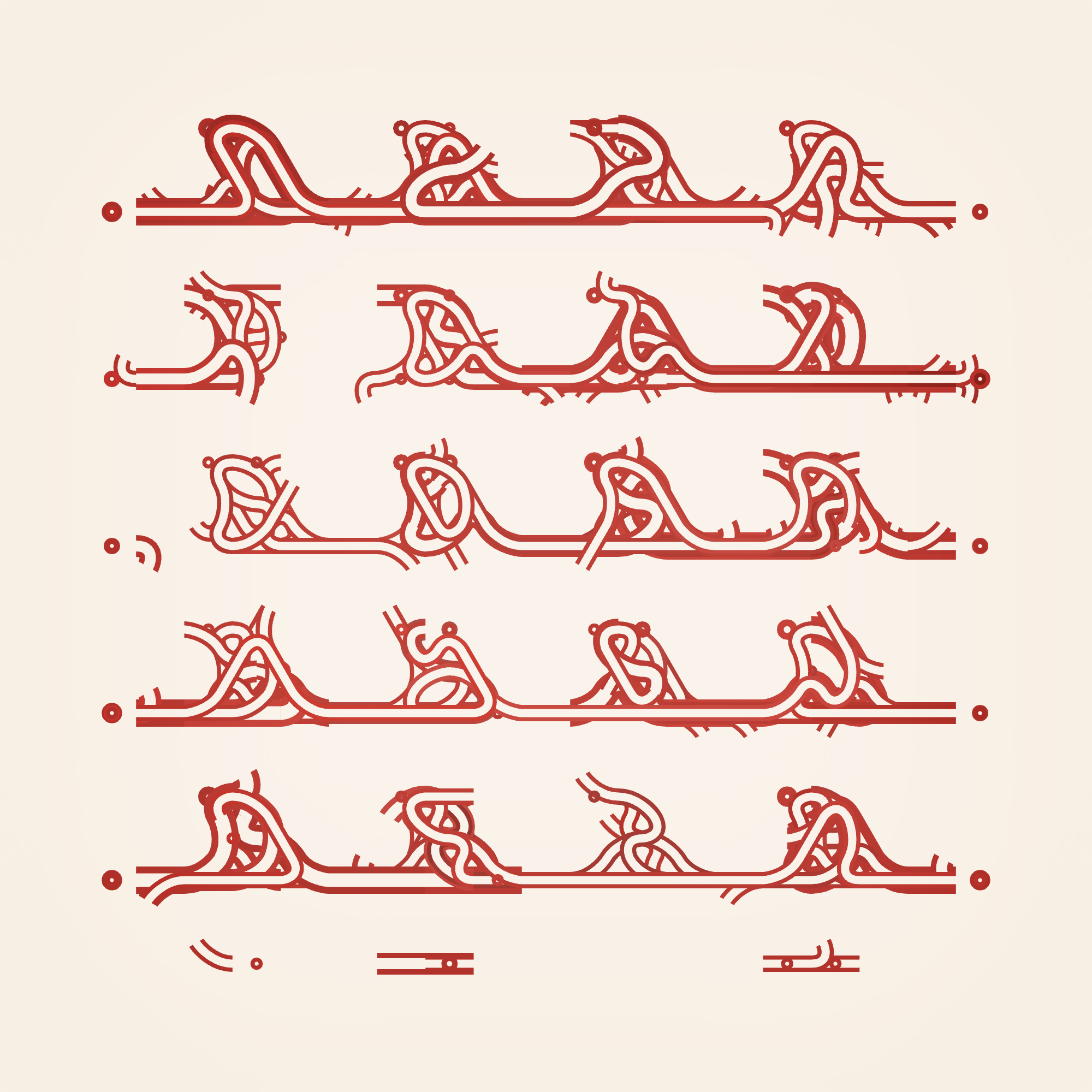
The Six "Regions" of Sendas
Capturing all possible outcomes is neither feasible nor desirable. Many paths lead nowhere, and while we discard the majority, some still take us to intriguing places. Thus, rather than limiting the project to a singular outcome, I created six different but related collections. Each one shares the same algorithm but is confined to a particular parameter space that I discovered and found worth sharing.
Agitada: Energetic, chaotic, with gravity-induced distortions and bright, playful colors.
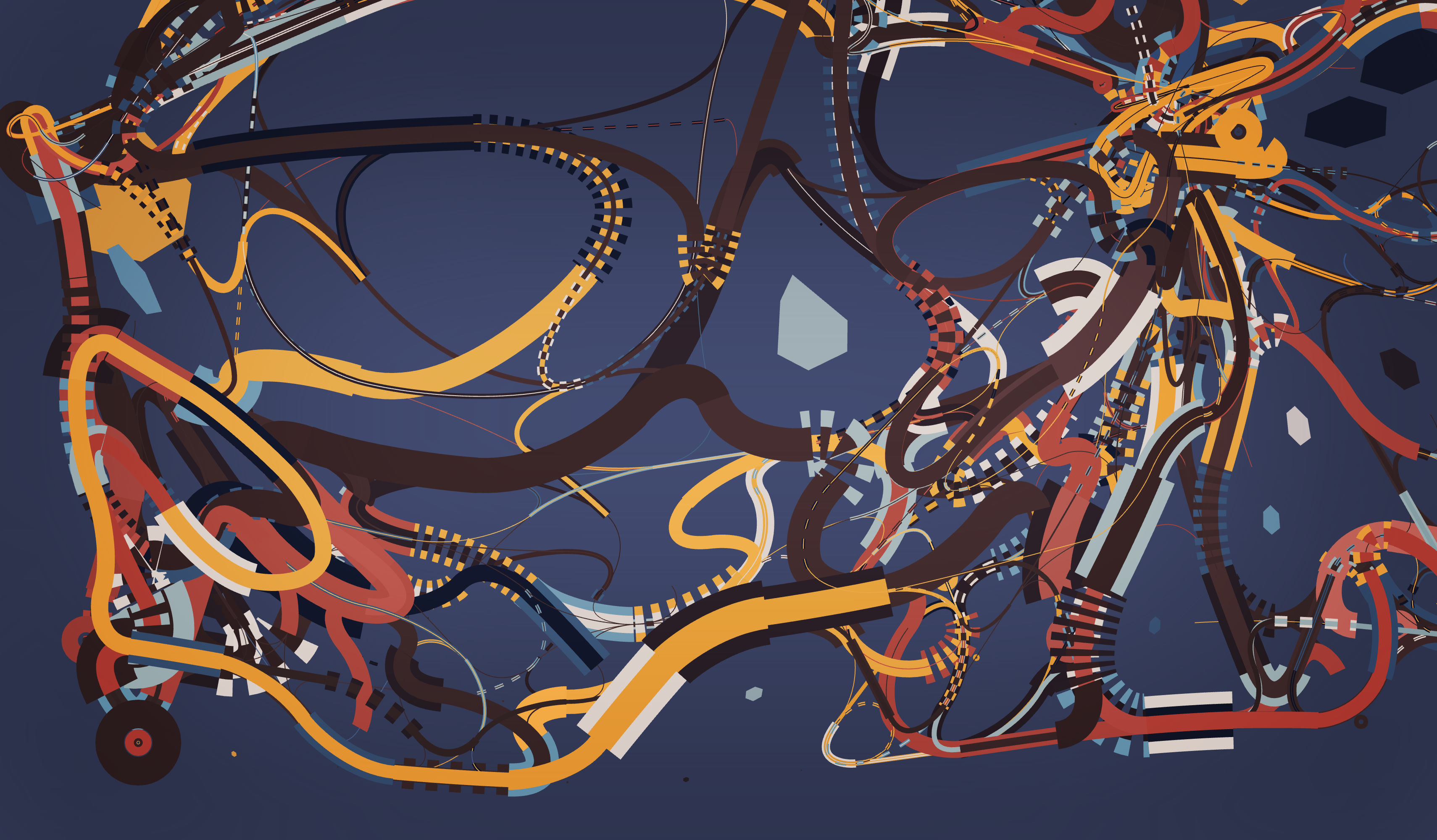
Boba: Thick, bold strokes with an almost cartoonish quality, evoking youth, passion, and authenticity.
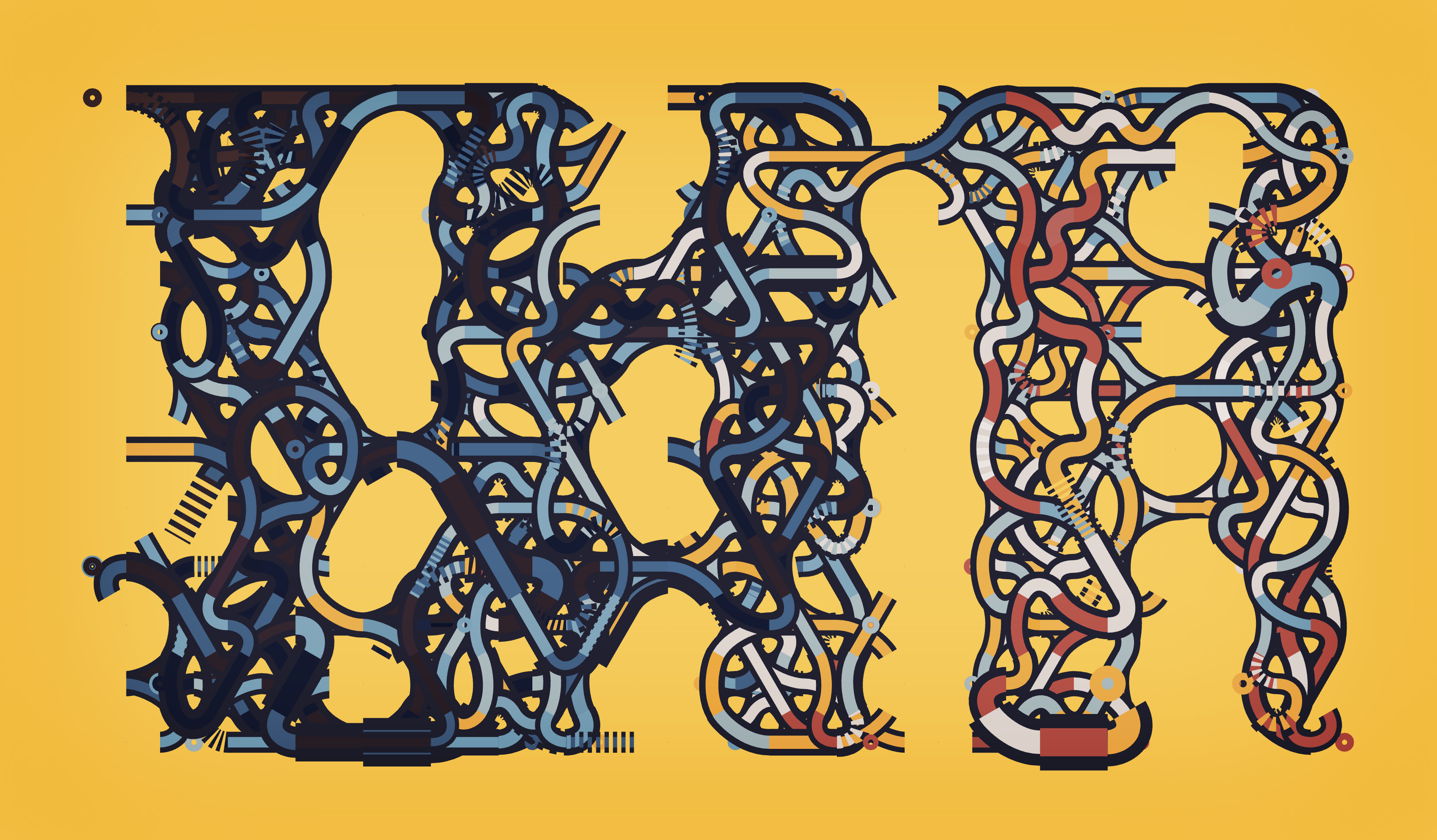
Cifrada: Dense, convoluted patterns in monochrome, reminiscent of ancient scripts or labyrinths.
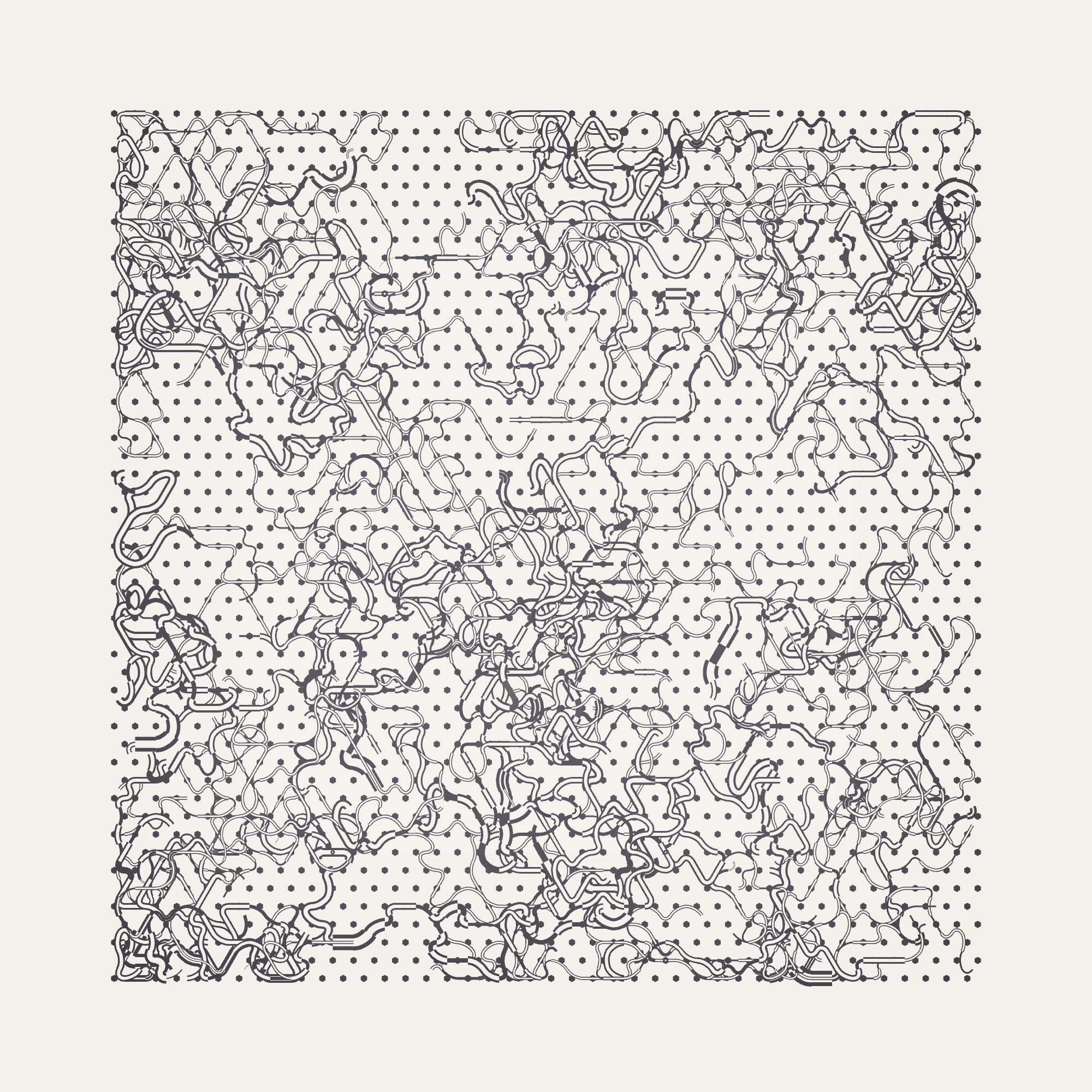
Diversa: Elegant, structured compositions, evoking abstract roadmaps full of detail.
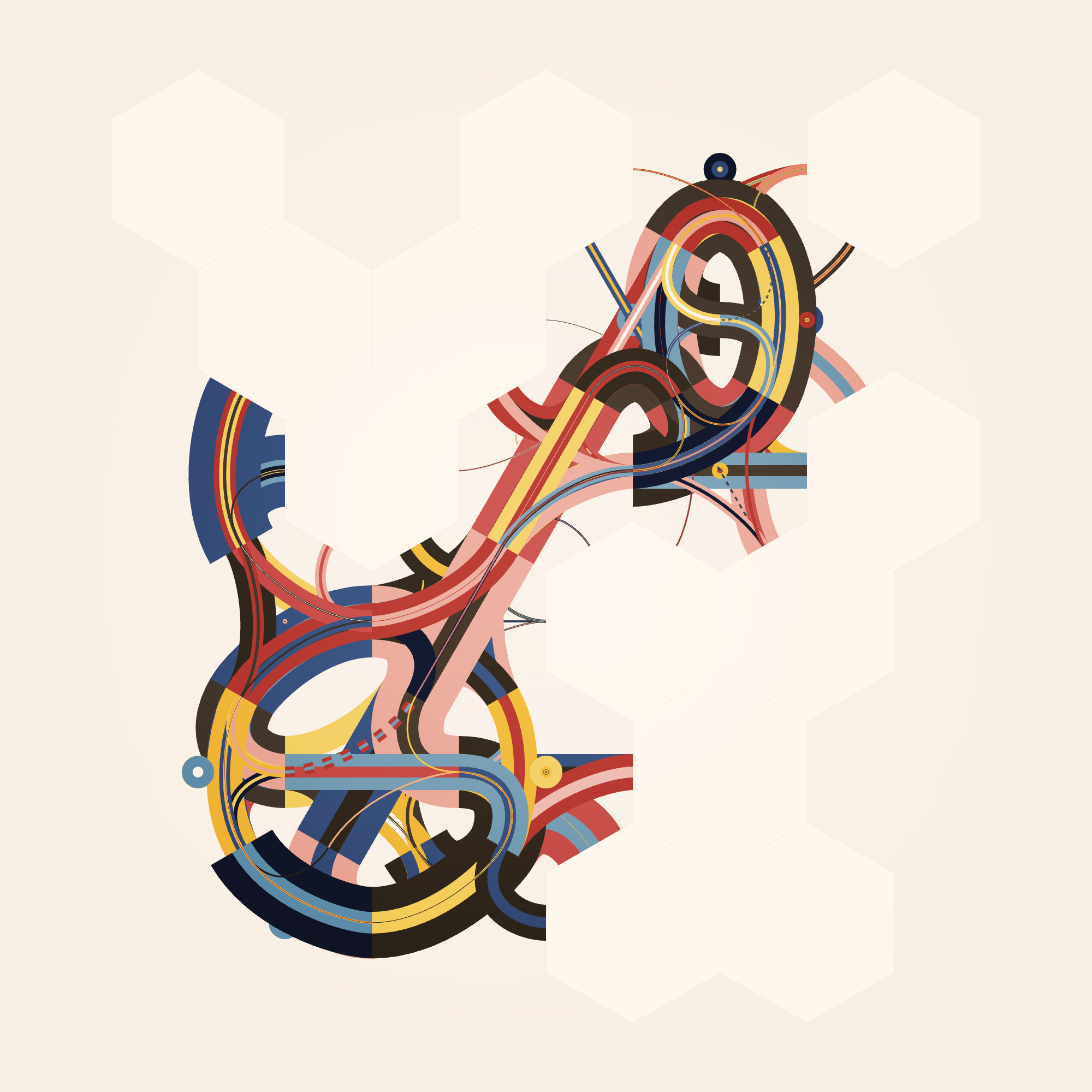
Escrita: Resembling handwritten text or figures, with horizontal alignment and interwoven connections.
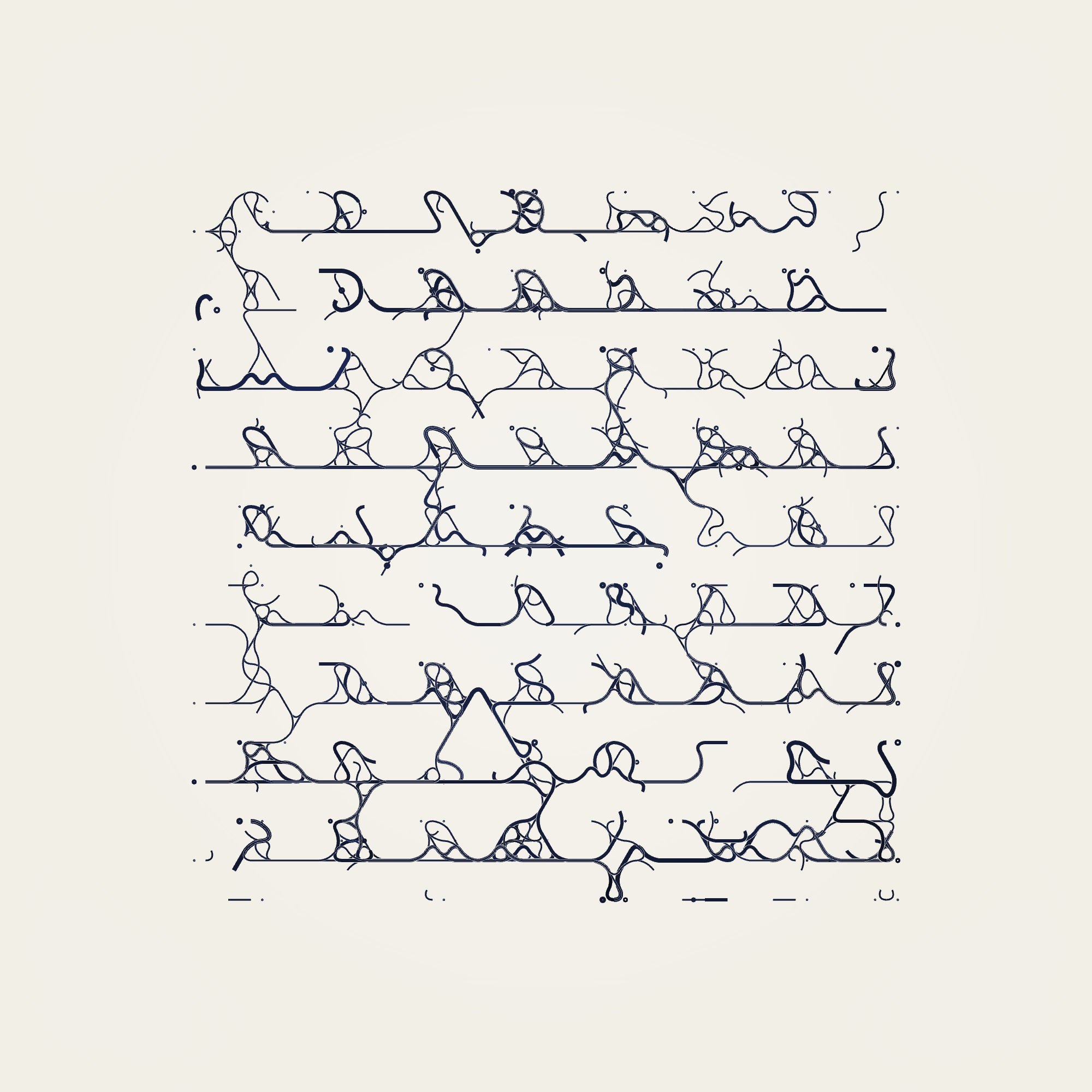
Franca: These outputs carry an aura of solemnity and trust, perhaps due to their resemblance to seals or stamps that denote authenticity.
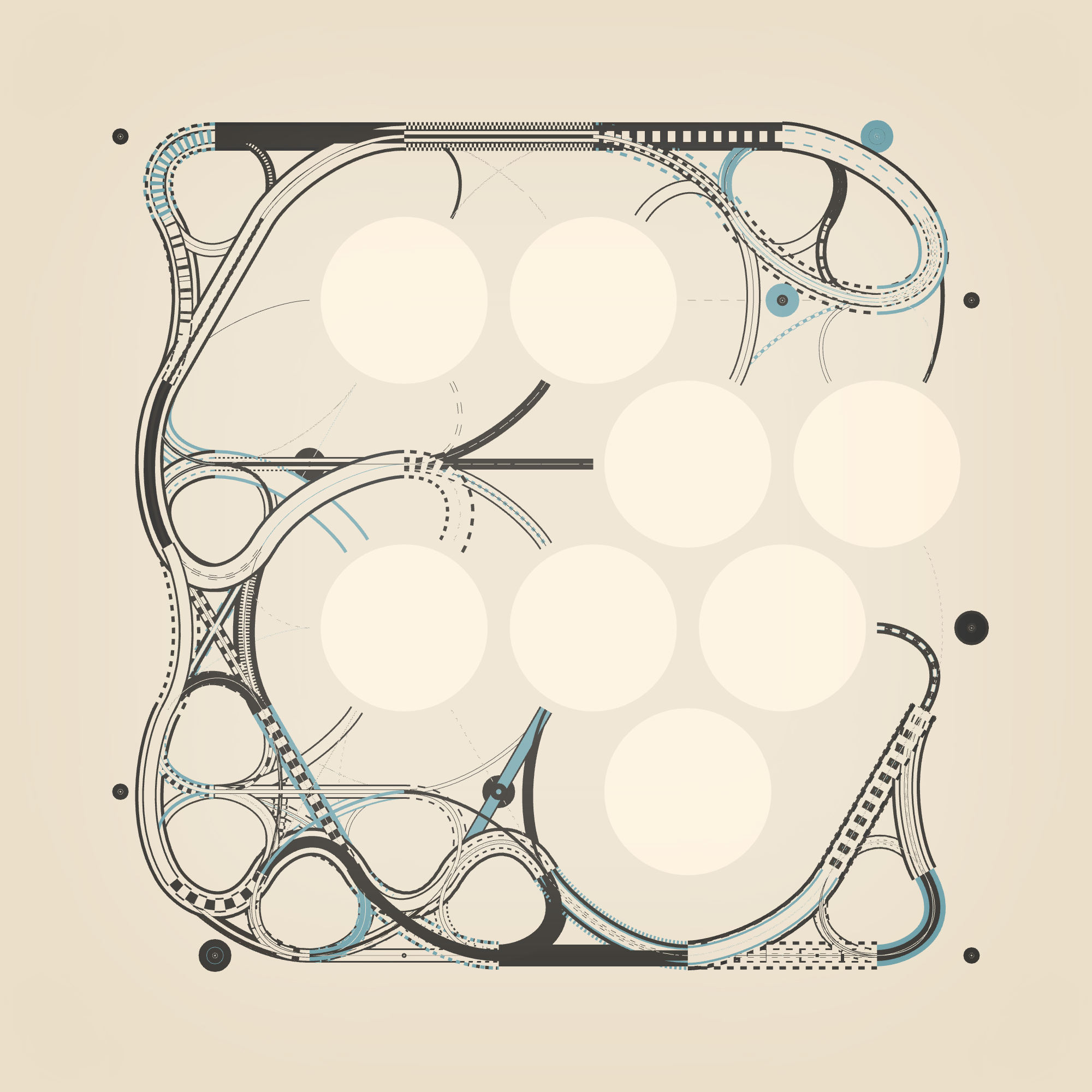
About The Artist
Daniel Aguilar (protozoo)
Daniel Aguilar (b. 1978, Barcelona) is a visual artist exploring computer code as a medium. He developed a career as a freelance designer and developer encompassing creative coding, interaction design, and data visualization. His work explores the potential of algorithms and generative processes for creativity.
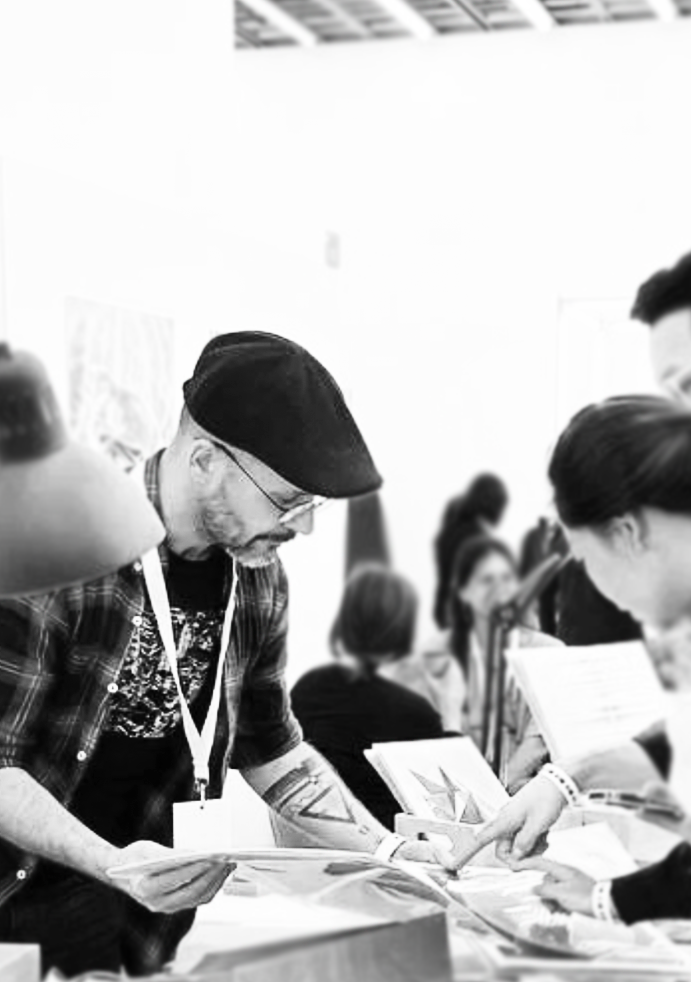
His abstract compositions seek a delicate balance between structure and unpredictability, integrating themes and motives from multiple domains to suggest new associations and meanings.
He has published several long-form generative collections and has exhibited his work at "NFest at Lezar House" (2023, Barcelona) and "Responsive Dreams" (2023, Barcelona).
Aguilar regularly posts about his ongoing projects and interests online on Twitter and Instagram.
